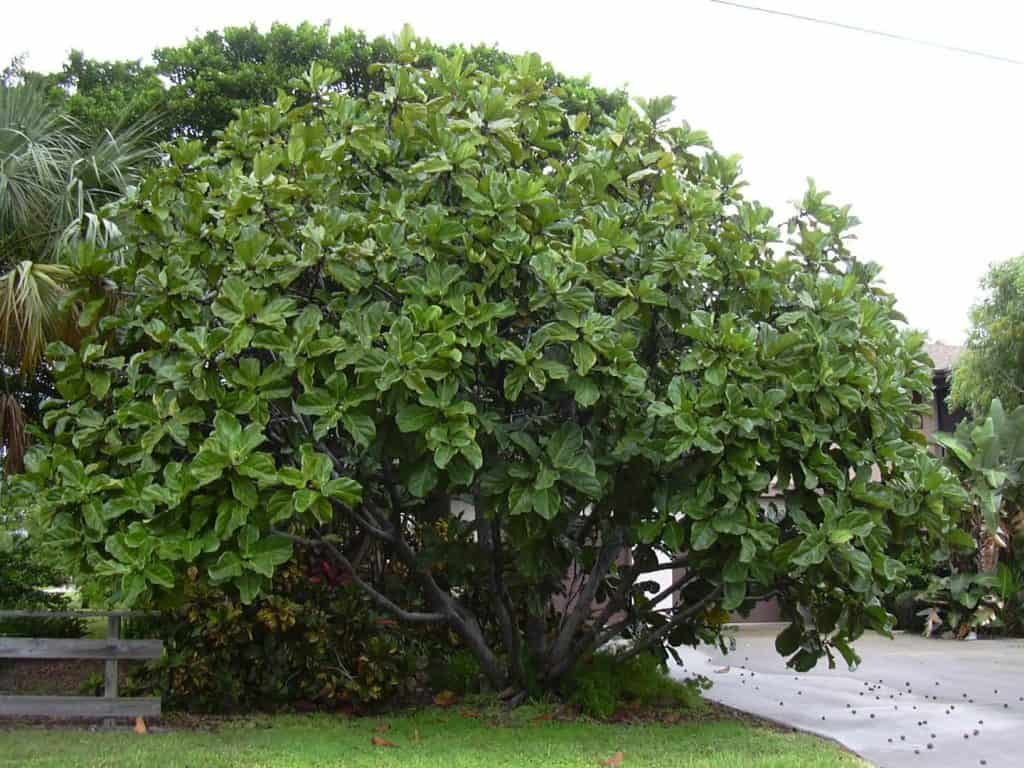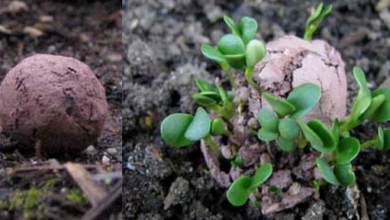How to Plant a Ficus: [Complete Guide to Planting this Tree]

ficus treeIt is a very special decorative tree, which adapts very easily to gardens and interior spaces almost all over the world.
They are native to tropical or subtropical regions.
If we grow ficus outdoors, a plant can easilyreach 30 meters in height.In interior spaces, they do not exceed 2 meters in height.
Its large number of species caters for all tastes. Small bushes, climbing plants, bushes and very large trees are exhibited, which will occur according to the environmental conditions where they develop.
Important points when planting ficus
- When to sow? spring and summer.

- Where to sow? Large tree species can be grown in warm, light to semi shaded areas.
- How big can you get? Outdoor varietiescan grow up to 30 meters in the right conditions.
- How do we prepare the land? They adapt very well to any soil with good drainage, well nourished and with a PH in ranges of 6 or 7.
- How do we water? Most species are very resistant to drought but as long as they are irrigated once a week or two .
- Plagues and diseases? It is sensitive to attacks by aphids, red spiders, fungi, mites and the cottony scale, among others .
When to plant a ficus?
Spring and summer are the best timesFicus reproduction from cuttings.
They tolerate temperatures that fluctuate between 24°C,as occurs with the case of the Ficus elastica species, which is the least tolerant to heat, up to 30 °C from the rest.
Where to sow plant a ficus?
 They should be grown in sunny areas, but in semi-shade mode.
They should be grown in sunny areas, but in semi-shade mode.
Although the existence of so many different species forces us to investigate more about their characteristics and environmental conditions, most ficuses need light in semi-shade to stay healthy.
If, for example, we buy a ficus in a flower shop, its location at home must guarantee medium-intensity light because direct sunlight harms it, especially in the summer.
Temperature changes are not recommended, nor is exposure to direct air conditioning or places with high humidity.
How to prepare the land?
 In general, any well-drained garden soil is favorable for growing ficuses.
In general, any well-drained garden soil is favorable for growing ficuses.
The best ones are those with a peaty component 3/6 and a large amount of organic matter -2/6. It wouldn’t hurt to add 1/6 sand to facilitate successful drainage.
In case you use a universal subscription,the most suitable PH is in the range of 6 or 7.
Expert gardeners recommend fertilizing these plants every two weeks while they are growing.
Liquid fertilizers rich in calcium and magnesium are perfect and will be applied every 40 days when winter passes.
It is not necessary to pay the young or recently transplanted specimens, because the soil will give them all the nutrients they need beyond a month and a half.
How do we water the ficus?
These unique plants are quite resistant to periods of drynessthat causes the heating of a home, but as long as they are supplied with adequate irrigation permanently.
The Ficus benjamina species, the most popular in homes, needs to be watered twice a week and Elastina admits only one weekly watering without any problem.
There is even a species called Ficus Iyrata that supports being watered every 15 days.
We must take into account the following: if the internal heat of the house varies a lot due to heating in the winter season, it is convenient to spray the leaves of the tree once or twice a day to keep it hydrated.
How to plant a ficus step by step?
There are two simple and effective methods for reproducing and multiplying the Ficus.
by cutting
- A branch of between 10 to 12 cm is cut from a tree, removing it very carefully.
- The lower leaves are removed and planted to a medium height.
- The earth must be pressed very well with your hands, making uniform movements around the stem you selected.
- Irrigation must be constant and at the same time every day, without drowning it.
elbow
- This method involves injecting hormones into an incision we make in the stem of the tree.
- Then a moss is placed in the intervened area and covered with a plastic bag until roots sprout, which are then cut very carefully to plant them in a pot or in the fertilized soil of a garden.
- It is highly recommended to apply this form in spring to multiply the great and enormous Ficus Elastina or Rubber Tree, which can reach heights of over 20 meters. It is executed when it is observed that they have lost the leaves in their lower part .
- When we have it in a pot, it is advisable to leave water in the saucer so that the plant absorbs the amount of water it requires and it is also interesting to put a layer of terracotta or pebbles at the bottom of the pot, so that the water drains in the form fluid.
What favorable associations does the ficus have?
The genus of the Ficuscontains more than 900 highly varied speciesthat can be found on all continents.
The different types of Ficus are characterized by being plants with long life cycles. They have simple leaves, flowers and sometimes edible fruits such as figs of the Ficus carica species.
The characteristic spectrum varies according to the Ficus species. We can find small bushes, bushes, climbers and large trees with very thick trunks and shallow roots.
Types and species of ficus
Among the best known species we have:
elastic
 It is also known as Ficus robusta. It is a large tree with very thick leaves and its colors are between green, cream and light green.
It is also known as Ficus robusta. It is a large tree with very thick leaves and its colors are between green, cream and light green.
lyrate
It is another species of very large tree but with less dark green leaves than the Ficus elastica.
Retusa
Its small, bushy leaves allow artistic pruning. It adapts very well to interior environments or to the garden, as long as there are no icy storms in winter periods.
benjamin
Very popular and easily adaptable, it is without a doubt the preferred Ficus in homes. Its leaves are bright green, but many other species have whitish or yellow leaves.
The Ficus Benjamina
It appears as one of the most purifying indoor plants in the environment. It is very versatile and several types of Benjamins can be combined, in different ways such as a single trunk with a small tree, in a group, in a braided trunk, in pyramidal shapes or a column.
All of these combinations produce fabulous ornamental designs for the home.
All species of the Ficus genus emit or release a milky secretion that sprouts when we affect the trunk or the leaves. This latex usually causes allergies and irritation. It is advisable to always carry out the pruning of this tree wearing gloves.
What pests and diseases does it have?
There are many pests and diseases that can attack our Ficus tree. Let’s see the most common:
Rust
A circular spot appears on the leaves caused by excess moisture. Damaged leaves should be carefully removed, natural ventilation increased and a specific fungicide used.
cottony mealybug
A somewhat sticky substance adheres to the leaves and stem of the tree with the appearance of a cobweb that can cause serious damage if it is not removed calmly from each sector of our plant.
It occurs in periods of high heat and little rain. It is attacked by applying a specific insecticide to exterminate these tiny insects.
Mites
As in other plants, the undersides of the leaves begin to turn greyish and scattered cobwebs are also observed in different parts. The cause? The red spider.
This disease is eliminated with the application of an effective acaricide that is sold in nurseries.
How long does the ficus live?
The ficus is a species of good longevity capable of reaching up to 200 years of life when planted outdoors.
Indoors, planted in pots, it has an average life of 10 years.
How long does it take to grow the ficus?
It is capable of taking up to 10 years when planted outdoors, but indoors this time is reduced because pruning is done and the size is smaller.
How long does it take to produce fruit?
It will take between 5 and 7 years to produce its fruits.
It is important to clarify that plants that are indoors do not flower or produce fruit.
Can it be grown in a pot?
Yes it can be grown in pots. The ficus is one of the favorite species for interior decoration due to its adaptability to these environments.
How many times does the ficus produce fruit?
Depending on the space in which it is located, it can generate up to two cycles of fruit per year.
Should the ficus be pollinated to obtain fruit?
It all depends on the type of ficus. Some do not need to be pollinated, while others need the intervention of insects.
How cold can the ficus tolerate?
They are cold-sensitive plants that are best kept in environments that exceed 10° C in winter.
In case of frost, you have to protect the roots with mulches and wait for the tree’s response when the bad weather has passed.
How many ficus can be planted per hectare?
The average number of trees per hectare is between 100 and 200 specimens, depending on the type of ficus to be used.
For example, the average for the ficus carica is 115 trees.
What kind of fertilizer does the ficus need?
Liquid fertilizers are used during the spring and summer to promote vegetative growth and the shine of the leaves.
If they are outdoors and planted in fertile soil, it is not necessary to pay.
How much heat and/or drought can the ficus tolerate?
It is capable of living in areas that reach temperatures of up to 30°C in summer. The most important thing with this species is that sudden changes in temperature are not generated.
It must be watered with a convenient frequency because it does not do well in long periods of drought.


![Photo of Summer Flowers: [Names, List, Characteristics and Care]](https://www.complete-gardening.com/wp-content/uploads/2022/08/summer-flowers-names-list-characteristics-and-care-390x220.jpg)
![Photo of Aquilegia Vulgaris: [Planting, Care, Irrigation, Substrate, Problems]](https://www.complete-gardening.com/wp-content/uploads/2022/08/aquilegia-vulgaris-planting-care-irrigation-substrate-problems-390x220.jpg)
